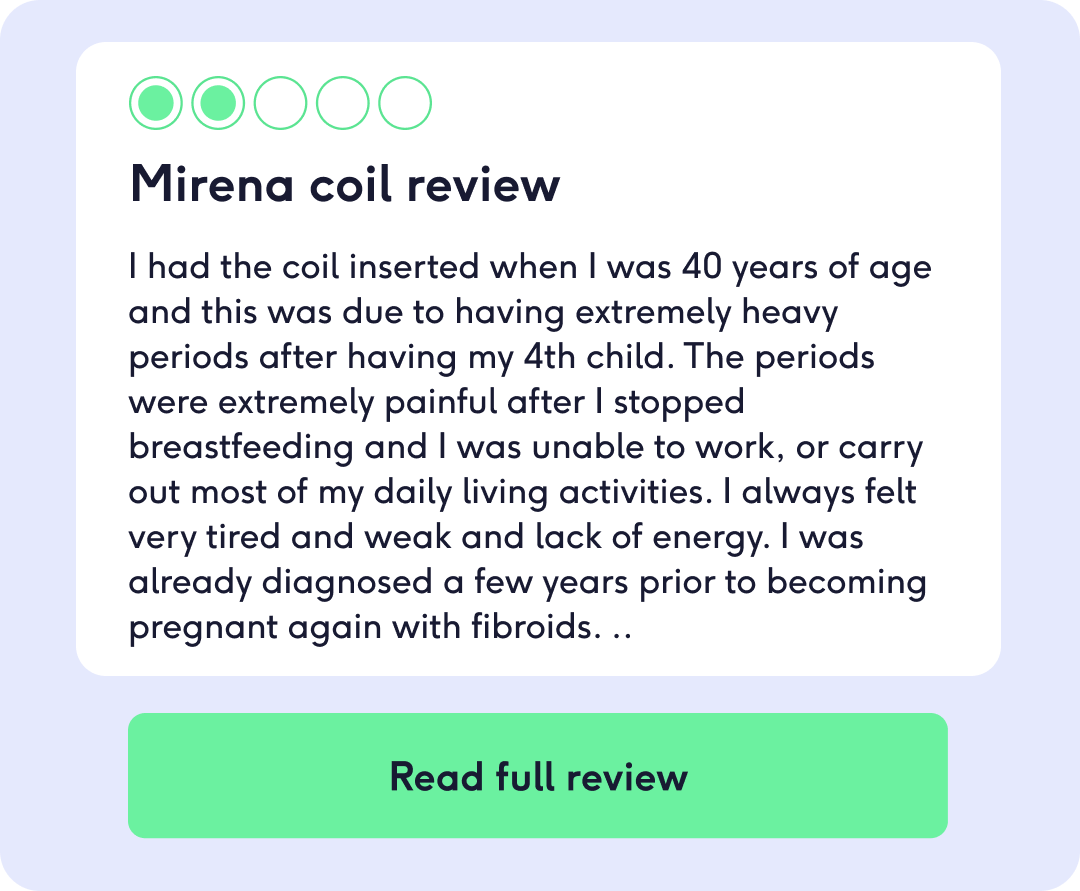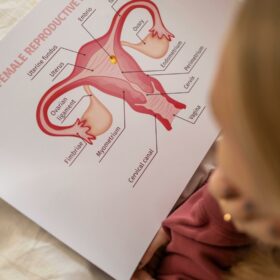
Fibroids treatments explained by a doctor
What's the lowdown?
Fibroids are benign growths of the uterus wall, which cause heavy bleeding, abdominal pain and in rare cases infertility
Fibroids are usually diagnosed with an ultrasound scan
There are various treatment types ranging from medications to contraception, and surgery.
Fibroids: The Recap
Fibroids are growths from the muscle and connective tissue of the uterus. They are non-cancerous and rest assured, have a low progression risk of turning into cancer. Fibroids are more common than you might think, with a humongous 70% of us developing the condition at some point in our life 1. Fibroids can be asymptomatic so you might live with them and not even realise you have one. There is also a huge spectrum of fibroid symptoms ranging from mild to severe, depending on their size and location!
Fibroids diagnosis usually comes from an internal pelvic exam and an ultrasound scan.
If you are eager to learn more about the causes and symptoms of the condition, head on over to our What are fibroids article to get your answers!
There are multiple types of uterine fibroids treatment, so if you are lost, you have come to the right place. We will break down the options so you can better understand what is right for you. The more you know the more autonomy you have over your body!
Fibroid Treatment
Medical treatment of fibroids
Medical treatments for fibroids primarily aim to reduce the heavy bleeding associated with the condition. It might not be effective for fibroids that are too large.
Tranexamic acid or mefenamic acid are oral medications that can reduce heavy bleeding associated with fibroids. Though the names sound similar, they have different mechanisms of action. Tranexamic acid clots blood, reducing blood loss while mefenamic acid reduces the level of prostaglandin in our body which is linked to heavy periods2.
These are usually the first line of treatment if your symptoms are mild-moderate and your fibroids are less than 3cm in size3.
Alternatively, if these fail, symptoms are too severe or the fibroids are too big, your GP will refer you to a specialist. They might consider another medical option called gonadotrophin-releasing hormone analogues (GnRHas) or ulipristal acetate. Instead of treating the symptoms directly, this medication works to reduce the size of the fibroid and therefore your symptoms2. Sadly GnRHas medications trigger uncomfortable menopausal-like side effects: hot flushes, sweating, vaginal dryness and stiff muscles2. Most people are given “add back” HRT to manage these symptoms. Ulipristal acetate also has a terrible side effect profile. It can induce severe nausea, severe tiredness, yellowing of the skin and tummy aches3. For these reasons, both these medications are only prescribed for a short period of time.
Hormonal treatment of fibroids
You could say contraception is a jack of all trades. It has more uses than just preventing pregnancy. When it comes to fibroids, hormonal contraception prevents the lining of the womb from growing, thus reducing heavy periods2. Contraception types you can use are the hormonal coil (Mirena, Levosert, Benilexa), implant (Nexplanon), injection (Depo-Provera, Noristerat, Sayana Press) or the contraceptive pill (combined and progestogen-only).
Each contraceptive can help to reduce heavy bleeding, however, they can come with varying side effects. Unfortunately, some common contraception side effects are mood swings, acne and reduced libido. You might find relief from one contraceptive type but this might not be the case for another. We have a directory full of reviews of experiences from the Lowdown community, and you can use our comparison tool to find your best match based on how likely a method is to reduce heavy bleeding alongside its side effects.
If you are unsure where to start, our contraception quiz is a great aid to make your decision easier.
Surgical treatment of fibroids
If you are sadly experiencing severe symptoms, have fibroids larger than 3cm or medical or hormonal treatment options have failed you4, some surgeries can be offered to help with the symptoms of your fibroids. A fibroid specialist (gynaecologist) will discuss further options with you. GnRHas might be prescribed prior to the surgery to shrink the fibroids.
Depending on the size and location of the fibroids, removal of the fibroid (myomectomy) might be considered if you want to maintain your fertility. Removing the fibroid itself will mean those uncomfortable symptoms should resolve. However, in 10-25% of cases, fibroids can re-grow5.
Myomectomy can be done via the abdomen or via hysteroscopy. A hysteroscopic procedure is minimally invasive as instruments are guided via the vagina into the uterus to remove the fibroid. This means no cuts will be made to your abdomen. If the fibroid cannot be removed entirely, a procedure called morcellation can be performed. The fibroid is cut into smaller pieces to allow for easier removal6.
However, if the removal of the fibroid itself is not suitable, your doctor might discuss the complete removal of your uterus (hysterectomy)2.
Removing your uterus as a whole is a big life-changing decision, especially if you are of reproductive age. When going through your options, remind yourself it is your body and you can take some time to think through the different treatment types before landing on one that suits you best. If you do not feel your concerns are being heard, you can always ask for a second opinion. Make sure to use your voice to advocate for yourself.
My mother was diagnosed with fibroids in her mid-forties, so I asked her about her treatment options: “My doctor re-assured me that this was a common diagnosis and many women suffer from fibroids. I asked around my circle of girlfriends and was surprised to know a handful had a similar diagnosis a few years back. Like them, I was presented with 2 treatment options, one to remove the fibroids itself and the second to undergo a hysterectomy. The first option came with a high probability of the fibroids growing again within 3 to 5 years. Fortunately, I had completed my family at that point. I chose instead to undergo a hysterectomy so that my fibroids would be resolved once and for all.”
Alternative treatments for fibroids
Medicine has come a long way in recent decades and now there are alternative options to surgery. If you are not keen on surgery, uterine artery embolism (UAE) and endometrial ablation could be a suitable alternative2.
UAE is a day procedure under local anaesthetic that cuts off the blood supply to the fibroid. Without enough blood flow, the fibroids shrink and bleed less, reducing the severity of symptoms. On the other hand, endometrial ablation thins the uterine lining, to reduce bleeding.
These are both simpler and quicker procedures with a lower complication rate compared to surgery. If medical, hormonal or major surgical treatments are not for you, these alternatives can be used for varying fibroid sizes. However, this decision will be one you make together with your gynaecologist.
What is an endometrial fibroid treatment?
Medically, endometrial fibroids do not exist. If you have a growth from the endometrial lining in the uterus, it is referred to as a polyp. If you are curious about the difference between a fibroid and polyp and its treatment, we have you covered in our blog.
Summary
There is a lot of information and considerations to take on board about fibroid treatments. Some options might work for you while others might just make things worse. If you still have some unanswered questions, our medical team at the Lowdown are always here to support you, so if you need a helping hand just reach out and chat to one of us!
Our medical review process
This article has been medically reviewed for factual and up to date information by a Lowdown doctor.







